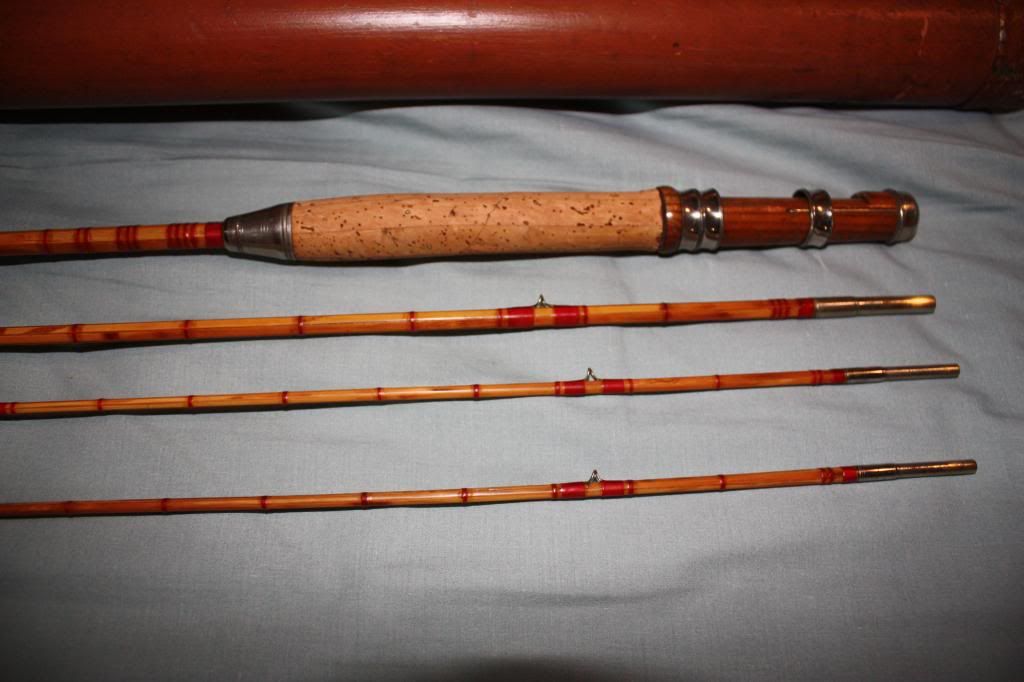
Orvis Serial Numbers Bamboo Rods Fly Fishing
Here is a Orvis Midge Nymph Impregnated Bamboo fly rod. Serial number is 76828, has matching numbers. The butt section serial number is difficult to see but if you look close, you can see and read the outline.
Also as a final check. Clutch replacement on cz100 riso procedure codes.
Noobie question. And maybe it's not unique to Orvis, either. When I see an old (1970s era) Orvis 8' 2-piece bamboo rod labeled 4 3/8 oz GBF(8), what is the weight? Is it 4 or 8?
When I look up line conversion charts, GBF tells me it's a weight-forward 8-weight. If it's an 8, is that the same as you would refer to an 8-weight on a modern rod?
And if it's an 8, then what's the purpose of the 4 3/8 oz part? Are both those numbers significant when pairing with a line? Much obliged.
Last edited by gchesterton; at 09:17 AM. Noobie question. And maybe it's not unique to Orvis, either. When I see an old (1970s era) Orvis 8' 2-piece bamboo rod labeled 4 3/8 oz GBF(8), what is the weight?
Is it 4 or 8? And if it's an 8, is that the same as you would refer to an 8-weight on a modern rod? And if it's an 8, then what's the purpose of the 4 3/8 oz part? Are both those numbers significant when pairing with a line? Much obliged.First of all, welcome to the forum, gchesterton.
This is a good place to find answers and meet good people. In answer to your question, here is a link to a conversion chart from Orvis.
As you can see, GBF translates to a WF 8wt modern fly line. Hope this helps, steve, aka spm.
The 4 3/8 oz is the physical rod weight. The GBF is the silk line rating. GBF is the equivalent of a Weight Forward 8 line. Orvis conversion chart here: You can send a letter to Orvis with the serial number of the rod and they can tell you who made it and what size ferrule was used etc There is also an Orvis rod database maintained by a third party (Greg Reynolds) that allows you to look up rods by serial number if it was registered. That can be found: The database has over 28,000 rods registered from 1940's through 2015 however, serial numbers only until the early 2000's.
He also lists catalog runs from the 1970's forward. Pretty cool stuff.
Bamboo rods only.
I just aquired a Orvis Battenkill bamboo rod that dates around the 60s or 70s and I was wondering if I should use it or not and how to take care of it If you need to get some information on the care and feeding of a bamboo rod go to the bamboo rodmaking tips site. Look under rod care and it will give you all the information you need on how to take good care of your rod.
I agree with all the others, take the rod and fish it. Like czkid says, once you get hooked you will let all of your plastic rods sit and gather dust.
The only times that Orvis had rods manufactured outside of their own facility was way back in the 40s when they didn't have sufficient capacity, and had Montague finish out some Orvis blanks. Then there was a period where they couldn't keep up with demand in possibly the 60s and licensed a firm in the UK to use the impregnation technique and produce some rods for them. These rods carried the name Equinox. As stated above, Battenkill was the 'top of the line' rod, and generally came with two tips. But you could order it with just one. The Madison was considered to be the second line of rods that was supposed to have some slight cosmetic blemish to the cane, etc. Astaro security gateway keygen crack idm. If you were smart you ordered a Madison during times of low production.